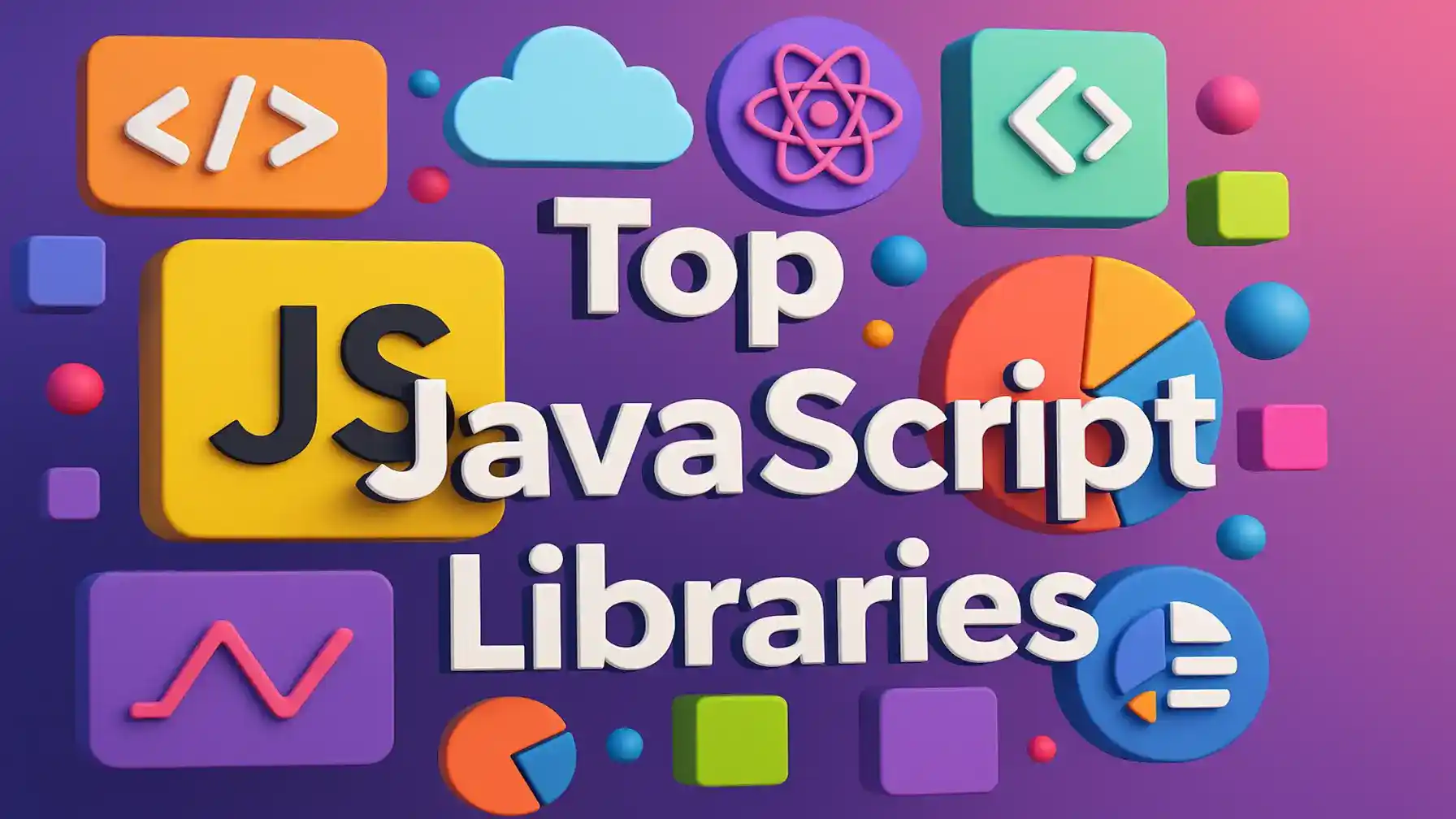In the dynamic landscape of web development, front end frameworks have emerged as indispensable tools for crafting captivating and user-centric web experiences. These powerful libraries and architectures, such as React, Angular, and Vue.js, empower developers to build high-performance, scalable, and cross-platform applications with unprecedented efficiency. By leveraging pre-built components, streamlined workflows, and a robust ecosystem of tools and libraries, developers can accelerate development cycles, enhance code maintainability, and deliver exceptional user experiences that seamlessly adapt across diverse devices.
The rapid evolution of front-end technologies demands that developers stay ahead of the curve. This blog post provides a comprehensive guide to the world of front-end frameworks, exploring their key features, benefits, and best practices. We’ll delve into the intricacies of popular frameworks, discuss the latest trends and emerging technologies, and offer valuable insights to help you choose the right framework for your specific project needs. Whether you’re a seasoned developer or just starting your front-end journey, this guide will equip you with the knowledge and resources to unlock the full potential of front-end frameworks and build exceptional web applications.
Benefits of using Front-End Frameworks:
Front-end frameworks offer a plethora of advantages that significantly streamline the web development process and enhance the overall quality of web applications.
Improved Development Speed
Imagine a world where you don’t have to reinvent the wheel for every single button, form, or navigation bar. Front-end frameworks bring this reality to life. They provide a treasure trove of pre-designed components, templates, and utilities, allowing developers to skip the tedious process of building these elements from scratch. This translates to:
- Reduced Development Time: By leveraging pre-built components, developers can significantly reduce the time spent on repetitive coding tasks, allowing them to focus on more complex and creative aspects of the project.
- Increased Productivity: With faster development cycles, teams can achieve more in less time, improving overall project efficiency and meeting deadlines more effectively.
- Focus on Innovation: By streamlining routine tasks, developers can dedicate their time and energy to innovative features, enhancing the overall user experience and creating truly unique applications.
Frameworks like Bootstrap, with its vast library of ready-to-use UI elements, exemplify this time-saving advantage. Developers can quickly integrate these components into their projects, customize them to match their brand identity, and accelerate the development process significantly.
Also Read: Full Stack Development Skills Every Developer Needs
Consistency and Standardization
In collaborative projects, maintaining consistency across different parts of the application can be a daunting challenge. Front-end frameworks address this challenge by providing a standardized set of rules, guidelines, and best practices. This ensures that:
- Code is More Readable and Maintainable: A consistent codebase improves code readability and maintainability, making it easier for developers to understand, modify, and debug the code.
- Reduced Errors: By adhering to a common set of standards, developers can minimize the risk of introducing errors and inconsistencies, leading to a more robust and reliable application.
- Improved Collaboration: A standardized approach fosters better collaboration among team members, as everyone is working with the same set of rules and guidelines. This reduces confusion and improves communication within the development team.
Enhanced Responsiveness
In today’s mobile-first world, responsiveness is no longer a luxury; it’s a necessity. Users expect websites and applications to adapt seamlessly to different screen sizes and devices, from smartphones and tablets to desktops and laptops. Front-end frameworks make it incredibly easy to achieve this responsiveness:
- Built-in Responsive Grid Systems: Most frameworks provide flexible grid systems that allow developers to create layouts that automatically adjust to different screen sizes and orientations.
- Media Queries: Frameworks often incorporate media queries, which enable developers to apply specific styles to different screen sizes, ensuring optimal viewing experiences across all devices.
- Mobile-First Approach: Many frameworks encourage a mobile-first approach to development, ensuring that the application looks and functions flawlessly on mobile devices before adapting to larger screens.
This focus on responsiveness ensures that your application reaches a wider audience and provides a consistent and enjoyable user experience across all platforms.
Cross-Browser Compatibility
The web is a diverse ecosystem with a multitude of browsers, each with its own quirks and rendering engines. Ensuring that your application looks and functions consistently across all major browsers can be a time-consuming and frustrating task. Front-end frameworks help to alleviate this pain point by:
- Handling Browser Inconsistencies: Most frameworks provide built-in mechanisms to handle browser inconsistencies and ensure consistent rendering across different browsers.
- Cross-Browser Testing Tools: Many frameworks offer tools and resources to assist with cross-browser testing, making it easier to identify and fix browser-specific issues.
- Focus on Standards: By adhering to web standards and best practices, frameworks help to minimize browser compatibility issues and ensure a more consistent user experience.
By leveraging these cross-browser compatibility features, developers can save significant time and effort in testing and debugging, ultimately delivering a more reliable and user-friendly application.
Types of Front-End Frameworks:
Front-end frameworks can be broadly categorized into two main types:
1. CSS Frameworks:
-
Focus: Primarily concerned with the visual presentation and layout of a website.
-
Key Features:
- Pre-defined Styles: Offer a collection of ready-to-use styles for common elements like buttons, forms, and typography, ensuring visual consistency.
- Grid Systems: Provide flexible and responsive grid systems that enable developers to create layouts that adapt seamlessly across different screen sizes.
- Utilities: Offer a range of utility classes for quickly styling elements, such as adjusting spacing, colors, and font sizes.
-
Popular Examples:
- Bootstrap: A widely-adopted and comprehensive framework known for its extensive component library and robust grid system.
- Tailwind CSS: A utility-first framework that provides a vast collection of low-level CSS classes for highly customizable and flexible styling.
- Materialize CSS: A framework inspired by Google’s Material Design, offering a clean and modern aesthetic.
2. JavaScript Frameworks:
-
Focus: Power the functionality and interactivity of web applications, enabling dynamic and engaging user experiences.
-
Key Features:
- Component-Based Architecture: Encourage modular development by breaking down applications into reusable components, improving code organization and maintainability.
- Data Binding: Facilitate the synchronization of data between the user interface and the underlying application logic.
- Virtual DOM: Optimize performance by creating a virtual representation of the actual DOM, minimizing the number of updates required to the actual page.
- State Management: Provide tools and techniques for managing the state of an application effectively, making it easier to handle complex data flows.
-
Popular Examples:
- React: Developed by Facebook, React is a popular choice known for its component-based architecture, Virtual DOM, and large community support.
- Angular: A comprehensive framework maintained by Google, offering features like two-way data binding, dependency injection, and a robust command-line interface.
- Vue.js: A versatile and beginner-friendly framework known for its progressive nature and ease of integration with existing projects.
Key Features of Popular Frameworks
Let’s delve deeper into the key features of two prominent frameworks:
Bootstrap:
- Grid System: Bootstrap’s flexible grid system is a cornerstone of its popularity. It allows developers to create responsive layouts with ease, ensuring that the application adapts seamlessly to different screen sizes and devices.
- Pre-designed Components: Bootstrap offers a rich library of pre-designed UI components, including buttons, navigation bars, forms, modals, and carousels. These components can be easily customized and integrated into projects, accelerating the development process.
React:
- Component-Based Architecture: React encourages developers to break down their applications into reusable components, each responsible for a specific part of the user interface. This modular approach enhances code organization, improves maintainability, and facilitates code reuse.
- Virtual DOM: React utilizes a virtual representation of the actual DOM, which efficiently tracks changes to the application state. Only the necessary parts of the actual DOM are updated, resulting in significant performance improvements, especially for applications with frequent data updates.
By understanding the key features and benefits of these frameworks, developers can make informed decisions about which framework best suits their project requirements and development goals.
Choosing the Right Framework:
With a plethora of front-end frameworks available, selecting the best fit for your project can seem daunting. However, by carefully considering several key factors, you can make an informed decision that aligns with your project’s specific requirements and your team’s capabilities.
Factors to Consider:
-
Project Type:
- Single-Page Applications (SPAs): Frameworks like React and Vue.js are well-suited for SPAs, offering features like routing, state management, and efficient data handling.
- E-commerce Platforms: Frameworks like Angular, with its robust architecture and strong community support, can effectively handle the complexity of e-commerce applications.
- Content-Heavy Websites: For simpler websites like blogs or landing pages, CSS frameworks like Bootstrap or Tailwind CSS might be sufficient.
-
Team Expertise:
- Consider the existing skills and experience of your development team.
- Frameworks like Vue.js offer a gentle learning curve and are generally easier for beginners to grasp.
- More complex frameworks like React and Angular may require a steeper learning curve and more experienced developers.
-
Scalability:
- Think about the potential growth of your project. Will it need to handle a large number of users, integrate with complex systems, or require frequent updates?
- Frameworks like Angular, with its robust architecture and strong community support, are well-suited for large-scale applications that require high performance and scalability.
-
Community and Ecosystem:
- A strong and active community provides valuable resources, such as tutorials, documentation, and support forums.
- Consider the availability of third-party libraries, tools, and integrations for the framework you choose.
Comparing Features:
To help you make a more informed decision, here’s a simplified comparison of some popular frameworks:
| Framework | Learning Curve | Ideal For | Unique Feature |
|---|---|---|---|
| React | Moderate | Interactive UIs, SPAs | Component-based architecture, Virtual DOM |
| Angular | Steep | Large-scale applications, Enterprise projects | Two-way data binding, Dependency Injection |
| Vue.js | Easy | Beginners, Small to Medium-sized projects | Flexibility, Progressive adoption |
| Svelte | Moderate | High-performance applications | Compilation-based approach, Minimal runtime |
This table provides a general overview. The best choice ultimately depends on the specific needs and priorities of your project.
By carefully evaluating these factors and comparing the features of different frameworks, you can select the most suitable option for your development needs and ensure the success of your project.
Top 5 Front-End Frameworks in 2024:
The front-end development landscape is constantly evolving, with new frameworks and technologies emerging regularly. Here’s a look at some of the top contenders in 2024:
1) React:
-
- Key Strengths:
- Component-based architecture, leading to highly modular and reusable code.
- Virtual DOM for optimized performance and efficient updates.
- Large and active community, providing extensive resources and support.
- Ideal for:
- Single-page applications (SPAs)
- User interfaces with frequent updates and interactions
- Cross-platform development (React Native)
- Key Strengths:
2) Angular:
-
- Key Strengths:
- Robust framework with features like dependency injection and two-way data binding.
- Well-suited for large-scale enterprise applications.
- Strong TypeScript support.
- Ideal for:
- Complex applications with demanding requirements
- Projects that require a highly structured and maintainable architecture
- Key Strengths:
3) Vue.js:
-
- Key Strengths:
- Easy to learn and integrate with existing projects.
- Versatile and can be used for a wide range of applications, from small projects to complex SPAs.
- Growing community and a vibrant ecosystem of tools and libraries.
- Ideal for:
- Beginners and developers looking for a flexible and adaptable framework.
- Projects that require a balance of simplicity and power.
- Key Strengths:
4) Svelte:
-
- Key Strengths:
- Shifts the work from runtime to compile time, resulting in highly performant applications with minimal runtime overhead.
- Simple and concise syntax, making it easier to write and maintain code.
- Ideal for:
- Performance-critical applications
- Projects that prioritize simplicity and efficiency
- Key Strengths:
5) Next.js:
-
- Key Strengths:
- Built on top of React, providing server-side rendering (SSR) capabilities.
- Excellent for SEO and improved performance.
- Offers features like file-system routing, API routes, and data fetching.
- Ideal for:
- Applications that require strong SEO performance
- Projects that benefit from server-side rendering for improved user experience and faster loading times
- Key Strengths:
This list is not exhaustive, and the “best” framework will depend on the specific needs and requirements of your project. It’s crucial to carefully evaluate your project’s goals, your team’s expertise, and the available resources before making a decision.
Note: This information is based on current trends and may evolve as the front-end development landscape continues to advance.
Frameworks for Beginners:
Advanced Front-End Frameworks:
For seasoned developers seeking cutting-edge solutions and enhanced performance, these advanced frameworks offer exciting possibilities:
-
Svelte:
- Key Strengths:
- Compile-time compilation: Svelte shifts the majority of the work from runtime to compile time, resulting in significantly smaller bundle sizes and faster performance.
- Minimal runtime: Svelte generates highly optimized code that requires minimal runtime overhead, further improving performance.
- Declarative syntax: Svelte’s syntax is concise and declarative, making it easy to write and maintain code.
- Ideal for:
- Developers prioritizing performance and efficiency.
- Projects that require high-performance applications with minimal runtime overhead.
- Building lightweight and fast-loading web applications.
- Key Strengths:
-
Next.js:
- Key Strengths:
- Server-Side Rendering (SSR): Next.js provides built-in support for SSR, which improves SEO, enhances user experience, and can lead to faster initial page loads.
- File-system routing: Automatically generates routes based on the file structure of your project, simplifying routing configuration.
- Data fetching: Offers various methods for fetching data, including
getStaticPropsandgetServerSideProps, enabling you to pre-render pages with data or fetch data at request time.
- Key Strengths:
-
- Ideal for:
- Applications that require strong SEO performance.
- Projects that benefit from server-side rendering, such as e-commerce platforms and blogs.
- Building high-performance and user-friendly web applications with React.
- Ideal for:
These advanced frameworks offer powerful features and capabilities for experienced developers. By exploring and mastering these frameworks, developers can unlock new levels of performance, efficiency, and creativity in their front-end development projects.
Framework Trends in 2024:
The world of front-end frameworks is constantly evolving, driven by the need for faster, more efficient, and developer-friendly solutions. Here are some key trends shaping the landscape in 2024:
-
Emergence of Cutting-Edge Frameworks:
- Frameworks like SolidJS and Qwik are gaining traction, pushing the boundaries of performance by minimizing JavaScript bundle sizes and optimizing rendering.
- These frameworks often leverage innovative techniques like hydration and island architecture to deliver exceptional user experiences with minimal JavaScript.
-
Unwavering Focus on Performance:
- Performance remains a top priority, with frameworks continually striving to reduce bundle sizes, improve loading times, and enhance overall application speed.
- Techniques like code splitting, lazy loading, and server-side rendering are increasingly being adopted to optimize performance and provide a smoother user experience.
-
Developer Experience as a Paramount Concern:
- Frameworks are increasingly prioritizing developer experience, aiming to simplify setup, configuration, and development workflows.
- This includes features like intuitive APIs, clear documentation, and robust tooling that streamline the development process and enhance developer productivity.
-
AI-Powered Development:
- While still in its early stages, the integration of AI is starting to influence front-end development.
- Expect to see advancements in areas like AI-powered code generation, intelligent code completion, and automated testing, further enhancing developer productivity and efficiency.
These trends are shaping the future of front-end development, driving innovation and pushing the boundaries of what’s possible with modern web applications. By staying informed about these trends and embracing the latest advancements, developers can build faster, more efficient, and more user-friendly applications.
Common Challenges with Front-End Frameworks:
While front-end frameworks offer numerous advantages, they also present some challenges that developers need to be aware of:
-
Steep Learning Curves:
- Some frameworks, particularly those with complex architectures like Angular, can have a steep learning curve, requiring significant time and effort to master.
- This can be challenging for beginners or developers with limited time to invest in learning new technologies.
-
Frequent Updates and Breaking Changes:
- Front-end frameworks evolve rapidly, with frequent updates and new versions being released.
- These updates often introduce new features and improvements but can also introduce breaking changes that require developers to refactor their code to maintain compatibility.
- This constant need to adapt to updates can be time-consuming and disruptive to ongoing development efforts.
-
Vendor Lock-in:
- In some cases, becoming heavily reliant on a specific framework can lead to vendor lock-in, making it difficult to migrate to a different framework or technology in the future.
- This can limit flexibility and increase the cost of maintaining and updating applications over the long term.
-
Potential for Over-Engineering:
- The availability of pre-built components and complex features can sometimes lead to over-engineering, where developers use overly complex solutions for relatively simple problems.
- This can result in increased complexity, slower performance, and unnecessary overhead.
-
Debugging Challenges:
- Debugging issues in complex applications built with frameworks can be challenging, especially for beginners.
- Understanding the framework’s internals and how different components interact can be crucial for effective debugging.
By acknowledging these challenges and adopting best practices such as regular code reviews, thorough testing, and careful consideration of framework choices, developers can effectively mitigate these risks and leverage the full potential of front-end frameworks.
Tools and Libraries Complementing Frameworks:
To enhance development efficiency and create more robust and feature-rich applications, front-end frameworks can be effectively complemented by a variety of tools and libraries:
-
State Management Tools:
- Managing the state of an application, especially in complex scenarios, can be challenging.
- State management libraries provide structured ways to handle and update application data, making it easier to reason about and debug complex interactions.
- Popular Options:
- Redux: A predictable state container that follows a unidirectional data flow, making it easy to understand and debug.
- MobX: A more flexible state management library that uses observable data and automatic updates.
- Pinia: A lightweight and performant state management library specifically designed for Vue.js.
-
UI Libraries:
- UI libraries provide a collection of pre-designed UI components, such as buttons, forms, navigation bars, and more.
- These components often adhere to specific design systems (like Material Design or Google’s Material Design), providing a consistent and visually appealing look and feel.
- Popular Options:
- Material-UI: A popular React UI library based on Google’s Material Design.
- Chakra UI: A highly customizable and accessible UI library built with React.
- Ant Design: A design system and React UI library that offers a rich set of components for enterprise-level applications.
-
Testing Libraries:
- Thorough testing is crucial for building robust and reliable applications.
- Testing libraries provide tools for writing unit tests, integration tests, and end-to-end tests, ensuring that your application functions as expected.
- Popular Options:
- Jest: A popular JavaScript testing framework known for its ease of use and comprehensive features.
- Enzyme: A JavaScript testing utility for React that simplifies the process of rendering and interacting with React components.
- Cypress: An end-to-end testing framework that allows you to interact with your application as a user would.
-
Build Tools:
- Build tools automate various development tasks, such as bundling, minification, and transpilation.
- Popular Options:
- Webpack: A powerful and versatile module bundler that can optimize and bundle your application’s code.
- Parcel: A fast and zero-configuration build tool that simplifies the development process.
By effectively utilizing these tools and libraries, developers can significantly enhance their productivity, improve the quality of their code, and build more robust and maintainable front-end applications.
Case Studies: Successful Use of Frameworks:
Here are some prominent examples of how successful companies have leveraged front-end frameworks:
- React at Facebook:
- Impact: Facebook, the very company that created React, heavily utilizes the framework to power its complex and dynamic user interface.
- Benefits: React’s component-based architecture and efficient rendering engine enable Facebook to deliver a smooth and responsive user experience to billions of users worldwide.
- Key Takeaways:
- Demonstrates the scalability and robustness of React for handling massive user traffic and complex applications.
- Highlights the value of using a framework created by the company itself, ensuring close integration and ongoing support.
- Vue.js for Startups:
- Impact: Vue.js has gained significant traction among startups due to its ease of use, flexibility, and rapid development capabilities.
- Examples: Companies like Alibaba and Xiaomi have successfully utilized Vue.js for building user-friendly and high-performance applications.
- Benefits:
- Vue.js’s gentle learning curve allows startups to quickly assemble development teams and accelerate project timelines.
- Its flexibility enables rapid prototyping and iteration, crucial for startups to quickly adapt to changing market demands.
- Other Notable Examples:
- Netflix: Uses React for its user interface, leveraging its performance and component-based architecture to deliver a seamless streaming experience.
- Airbnb: Employs React to power its intricate and dynamic booking platform, showcasing the framework’s ability to handle complex user interactions.
- Grammarly: Leverages React to build its intuitive and user-friendly writing assistant, demonstrating the framework’s suitability for building sophisticated web applications.
These case studies illustrate the real-world impact and effectiveness of front-end frameworks in powering successful web applications across various industries. By understanding how these companies have leveraged frameworks to achieve their goals, developers can gain valuable insights and inspiration for their own projects.
Future of Front-End Frameworks:
The future of front-end frameworks is brimming with exciting possibilities, driven by advancements in technology and the evolving needs of developers. Here are some key trends to watch:
-
AI and Machine Learning Integration:
- Expect to see a significant increase in the integration of AI and machine learning within front-end frameworks.
- This could manifest in various ways, such as:
- AI-powered code generation: Generating code snippets, components, and even entire sections of code based on developer input and project requirements.
- Intelligent code completion: Providing more accurate and context-aware code suggestions, significantly improving developer productivity.
- Automated testing: Generating and executing automated tests, ensuring code quality and reducing the time spent on manual testing.
- Personalized development experiences: Frameworks adapting to individual developer preferences and coding styles, offering customized recommendations and suggestions.
-
Enhanced Developer Experience:
- Frameworks will continue to prioritize developer experience, focusing on:
- Simplified setup and configuration: Streamlining the initial setup and configuration process, making it easier for developers to get started with new projects.
- Improved tooling and integrations: Providing better integration with popular tools and services, such as version control systems, testing frameworks, and design tools.
- Enhanced debugging and troubleshooting: Offering more robust debugging tools and better error handling mechanisms, making it easier to identify and resolve issues.
- Frameworks will continue to prioritize developer experience, focusing on:
-
Focus on Performance and Accessibility:
- Performance and accessibility will remain crucial priorities.
- Frameworks will continue to evolve to deliver high-performance applications with minimal JavaScript, while also ensuring that applications are accessible to users with disabilities.
-
Metaverse and Web3 Integration:
- As the metaverse and Web3 technologies continue to evolve, front-end frameworks will likely play a crucial role in building immersive and interactive user experiences within these new digital realms.
These are just a few of the exciting possibilities that lie ahead for front-end frameworks. As technology continues to advance, we can expect to see even more innovative solutions that empower developers to build cutting-edge and user-centric web applications.
Tips for Staying Updated
The front-end development landscape is constantly evolving, with new technologies, frameworks, and best practices emerging regularly. To stay competitive and relevant, it’s crucial to continuously learn and adapt. Here are some valuable tips for staying updated:
-
Follow Industry Blogs and Publications:
- Subscribe to and regularly read blogs and publications that cover front-end development topics.
- Some excellent resources include:
- Smashing Magazine: A renowned online magazine covering web design, development, and UX.
- CSS-Tricks: A popular blog with a wealth of articles, tutorials, and resources on CSS, JavaScript, and front-end development.
- A List Apart: A respected online publication that focuses on web standards, design, and usability.
- Frontend Masters: A platform offering high-quality online courses and workshops on front-end development topics.
-
Engage with Developer Communities:
- Join and actively participate in online developer communities.
- Platforms like:
- GitHub: Explore open-source projects, contribute to discussions, and learn from other developers.
- Reddit: Participate in relevant subreddits, such as r/webdev, r/javascript, and r/reactjs, to engage in discussions, share knowledge, and stay informed about the latest trends.
- Discord: Join relevant Discord servers to connect with other developers, participate in real-time discussions, and access valuable resources.
-
Invest in Continuous Learning:
- Online Courses: Platforms like Udemy, Coursera, and Frontend Masters offer a wide range of online courses on front-end development topics, covering everything from fundamental concepts to advanced frameworks and techniques.
- Tutorials and Workshops: Explore interactive tutorials and workshops available on platforms like Codecademy, freeCodeCamp, and Scrimba to gain hands-on experience and build practical projects.
- Books: Read books on front-end development, JavaScript, and related technologies to deepen your understanding and gain insights from industry experts.
-
Attend Conferences and Meetups:
- Attend industry conferences and meetups to network with other developers, learn about the latest trends, and gain valuable insights from industry leaders.
-
Experiment and Build Projects:
- The best way to learn is by doing.
- Experiment with new technologies, build personal projects, and apply your knowledge to real-world scenarios.
By consistently investing in your learning and staying engaged with the front-end development community, you can ensure that your skills remain sharp and that you’re well-equipped to tackle the challenges and opportunities of this ever-evolving field.
Conclusion:
Front-end frameworks have undeniably transformed the landscape of web development. They empower developers to build sophisticated, user-centric applications with unprecedented speed, efficiency, and maintainability. From accelerating development cycles and improving code quality to enhancing user experience and enabling cross-platform compatibility, the benefits of utilizing front-end frameworks are numerous and significant.
Whether you’re a seasoned professional or just beginning your journey into the world of web development, there’s a framework perfectly suited to your needs and skill level. From beginner-friendly options like Vue.js to advanced frameworks like Svelte and Next.js, the diverse ecosystem offers something for everyone.
Embrace the power of these tools, experiment with different approaches, and continuously learn and adapt to the ever-evolving landscape of front-end development. By embracing the opportunities presented by these powerful frameworks, you can unlock your full potential as a web developer and create truly exceptional digital experiences.
FAQs:
1) What is the difference between a library and a framework?
A library offers specific functionality to be used in applications, while a framework provides a complete structure to build applications.
2) Which is better: Angular or React?
Angular is better for large, enterprise-grade applications, while React is preferred for interactive and dynamic UIs.
3) Are front-end frameworks necessary for small projects?
Not always, but they can simplify development and ensure scalability if the project grows.
4) How long does it take to learn a front-end framework?
It depends on the framework and your background. On average, beginners take 1-2 months to learn the basics.
5) What’s the future of front-end frameworks?
Frameworks will become more intuitive, lightweight, and integrated with AI to streamline development further.









